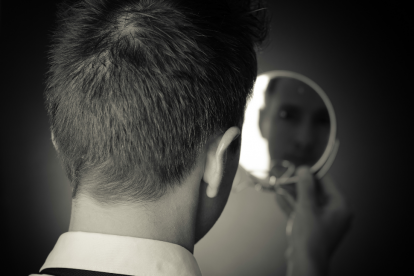
What are the Signs and Symptoms of Bipolar Disorder?
The signs and symptoms of bipolar disorder follow the cycling between episodes of mania and depression. Manic episodes cause euphoria, exaggerated self-confidence, racing thoughts, high energy and activity levels, and risk-taking behaviors. Depressive episodes are characterized by excessive sadness, lack of energy, loss of interest in activities, changes in eating and sleeping behaviors, and suicidal thoughts. Both episodes can impair the ability to function normally.
Bipolar disorder is a mental health condition and mood disorder that causes cycling between periods of depression and periods of mania.
The depressive episodes of bipolar are very much like major depression.
The periods of mania cause symptoms that are essentially the opposite of those caused by depression, including euphoria and a lot of energy.
While most people experience changes in mood, the rapidity and extremes of mood changes caused by bipolar disorder are unhealthy and can even be dangerous.
Symptoms of Bipolar Depression
With a few possible differences, the traits seen in someone struggling with a bipolar depressive episode are the same as those in someone with major depression. Not everyone will experience all of these, but the typical symptoms of a depressive episode are:
- An excessive and persistent hopeless, sad, or depressed mood
- Extreme fatigue and lack of energy to do normal tasks
- An inability to enjoy activities
- Irritability and restlessness or sluggishness
- Changes in sleeping habits, leading to insomnia or more sleep
- Changes in eating habits, leading to excessive weight gain or loss
- Inappropriate feelings of guilt, shame, and low self-worth
- Trouble thinking, concentrating, or focusing on tasks, and an inability to make decisions
- Thinking about death or even being suicidal
The symptoms of a depressive episode are excessive and go beyond a typical bad mood. They are severe enough to interfere with normal functioning, such as maintaining housework or performing at school. The depressed mood persists and is often out of line with a person’s actual circumstances.
Symptoms of Manic Episodes
Manic episodes may be described as either mania or hypomania. The latter causes similar symptoms but is less extreme. In many ways mania is the opposite of depression, and like depression it is not a healthy state of mind. It is a state that causes extreme moods and distorted thinking, just like depression. Signs of mania include:
- Feelings of euphoria, an upbeat, wired feeling, as if anything can be accomplished
- Extremely high energy along with increased activity levels
- Less sleep than normal
- Racing thoughts that may appear to others as rapid talking that jumps from one subject to another
- Being easily distracted
- Making poor decisions, which may have serious consequences, like overspending, having unprotected sex, or reckless driving
- Psychosis in extreme cases— a break with reality
A person going through a manic episode will experience three or more of these symptoms that are severe enough to interfere with normal functioning. For someone with hypomania the symptoms are the same, but they are less severe and may still allow them to function at home, work, or school.
Signs of Mixed Episode
Some people with bipolar disorder will experience periods described as mixed episodes. These episodes cause symptoms of both depression and mania during the same time period. Some common symptom combinations during a mixed episode include having high energy but a depressed mood, depressed feelings along with irritability and agitation, or racing thoughts along with feelings of hopelessness and depression. A mixed episode may put a person at an increased risk for suicide.
How Bipolar Disorder Cycles
The signs and symptoms of bipolar disorder may vary by how it cycles and by the type of disorder. Bipolar I is the classic type of bipolar disorder, characterized by full-blown manic episodes that last a week or longer and that may be severe enough to require hospitalization. With bipolar I there may or may not be cycles of depression, but there often are. These episodes usually last two weeks or longer, and there may also be mixed episodes.
Bipolar II causes hypomanic episodes as well as depression. The hypomanic episodes are much less severe than the manic episodes caused by bipolar I. The duration of hypomania and depression are similar. Cyclothymic disorder causes many cycles of hypomania and depression over a long period of time, two years or more. The symptoms are similar to bipolar I and bipolar II but are often less severe or less numerous.
Even with distinctions between different types of bipolar disorder, each person experiences cycling in a unique way. Some may be more prone to mania, while others experience depression. Some people may have longer periods of mania and shorter periods of depression. The characteristics can vary widely from one individual to the next.
Some people may experience a cycling pattern referred to as rapid cycling bipolar. This occurs when there are four or more cycles of mania and depression in a 12-month period. The changes between episodes may be quick and random, and for those who experience it, it feels like riding a roller coaster. Mood shifts may be as rapid as shifting from mania to depression, or vice versa, within days or hours. Rapid cycling bipolar is most common when bipolar disorder is not treated adequately or at all.
Is it Depression or Bipolar?
Depression is the diagnosis when a person only experiences depressive episodes. When there are any manic or hypomanic episodes, the diagnosis is bipolar disorder. However, it can be challenging for individuals, and even their loved ones, to tell the difference or to distinguish between mania, especially hypomania, and simply recovering and feeling better after a depressive episode.
The main difference between mania or hypomania and a normal, post-depressive mood is the extreme nature of the manic mood: euphoria, not just happiness or relief, high energy and high activity rather than normal energy levels. The manic period may also trigger bipolar anger, or an unusual level of irritability and sudden outbursts.
There may also be some differences between symptoms of major depression and bipolar depressive episodes. Someone going through bipolar depression can, and probably will, experience many of the symptoms associated with major depression. They are more likely, though, to feel irritable and agitated and to have angry or even aggressive outbursts.
Signs of Bipolar Disorder in Children and Teens
Bipolar disorder may first develop as early as in childhood, but distinguishing symptoms of the condition from other issues in children and teens can be challenging. Young people exhibiting similar symptoms may just be going through typical ups and downs in mood, or they may be suffering from trauma or another undiagnosed mental illness.
Some distinct differences between bipolar disorder in adults and in teens and children include the way the condition cycles. The pattern may be different in younger people. They may also experience more sudden shifts in moods when in the middle of an episode as compared to adults. Children are more likely to go through periods with no mood symptoms between episodes of mania and depression.
The typical symptoms of depression and mania occur in children and teens, but they may look different. For instance, a manic child may act overly silly or exhibit behaviors that are not normal for them. Manic or depressive episodes can cause temper tantrums in children or unusual outbursts in teens. During a depression, children and teens may complain about physical pains that have no obvious cause, especially stomachaches. Teens struggling with bipolar symptoms may begin experimenting with drugs or alcohol.
Bipolar disorder is a very serious mental illness that causes symptoms that can be very disruptive to living a normal life. It can be challenging or even impossible to maintain healthy relationships, to hold down a job, or to resist the urge to self-medicate with drugs or alcohol. The good news is that treatment for bipolar can manage the symptoms and allow a person to feel better and function normally again.
Getting a diagnosis is a crucial first step, and for many people with this serious condition a stay in a residential facility can help initiate a long-term treatment plan. Treatment includes therapy, medication, social support, and self-care. With early, intensive residential treatment for bipolar disorder, followed by a commitment to ongoing care, the prognosis for someone diagnosed with bipolar disorder is positive and hopeful.


